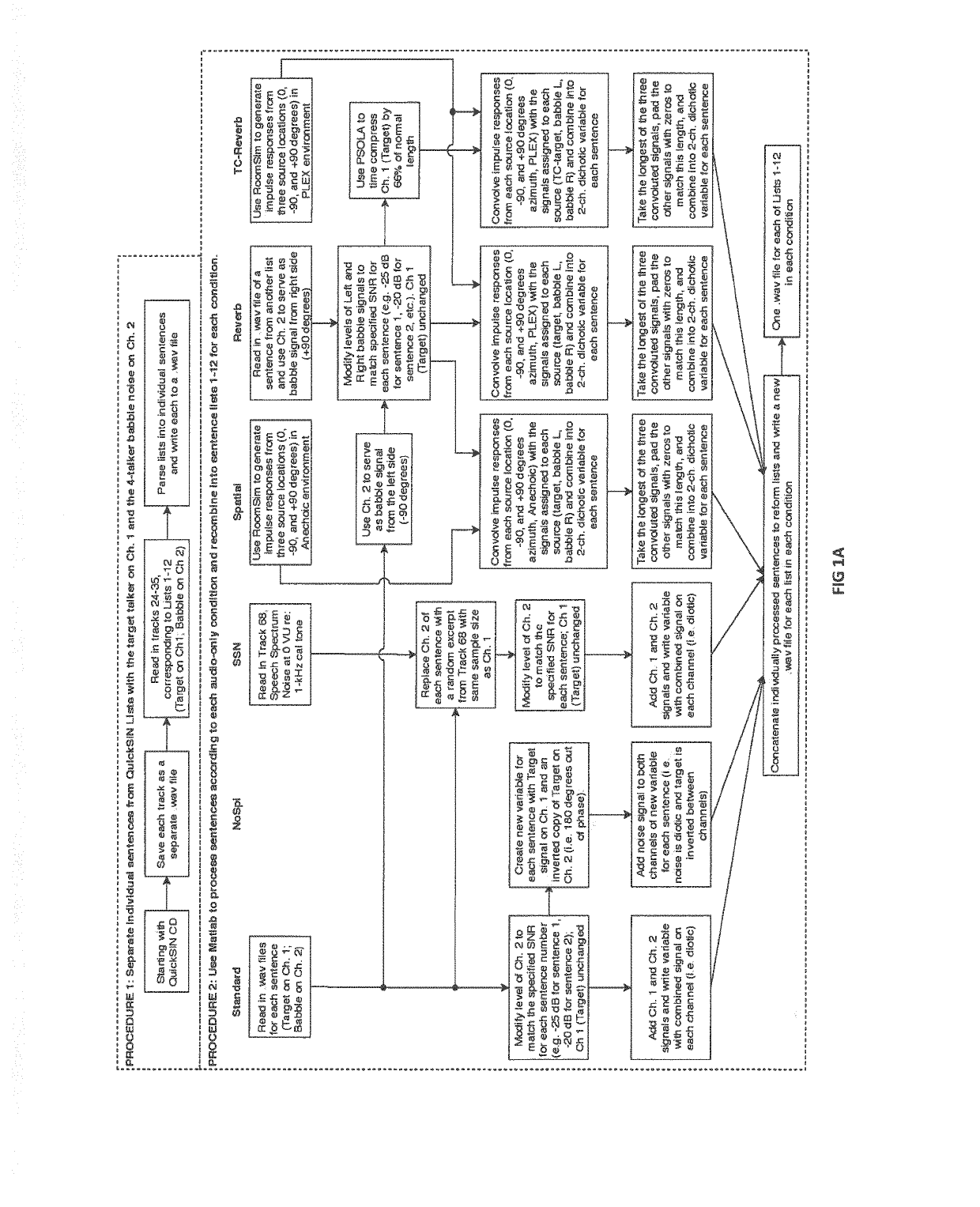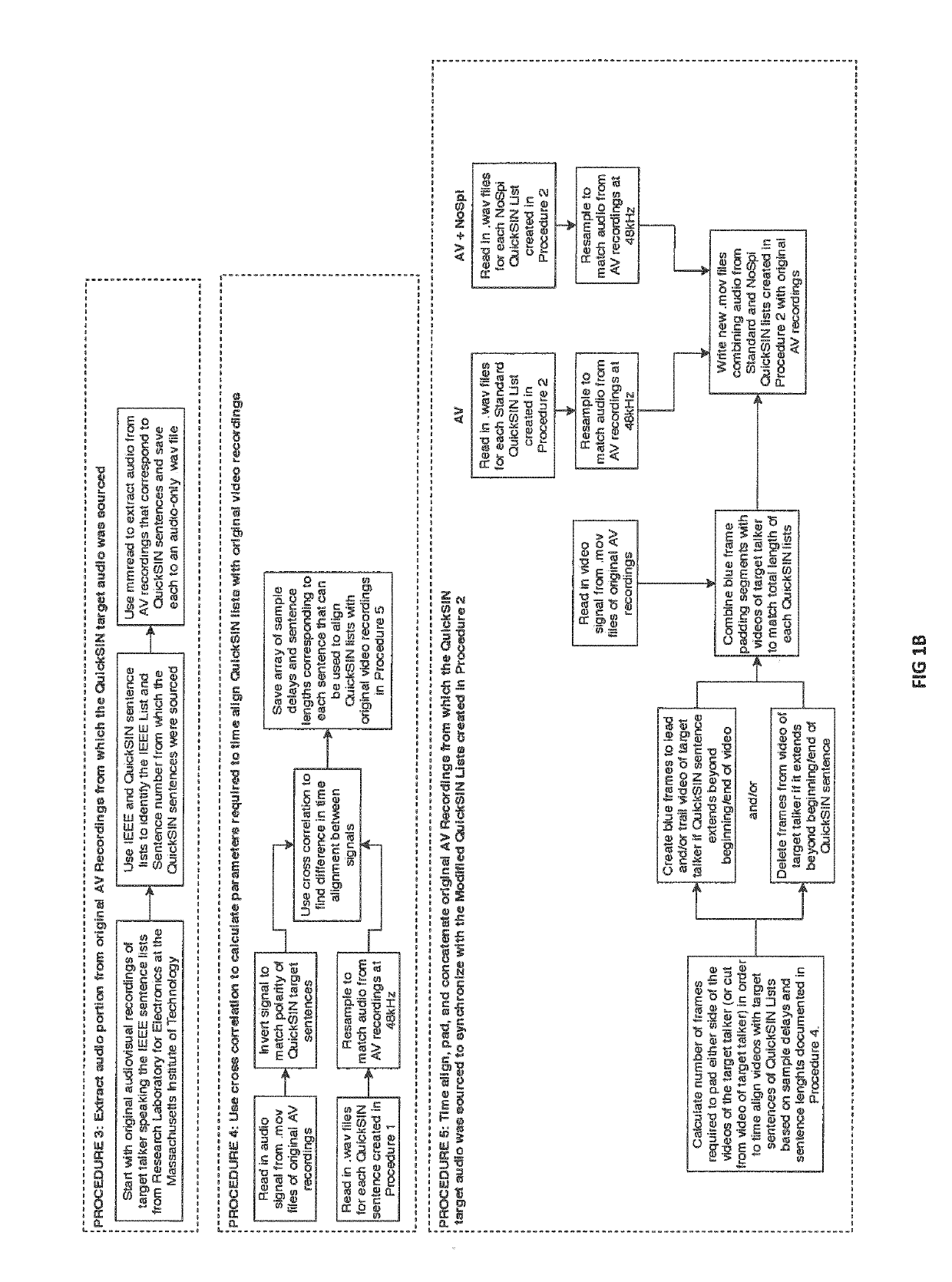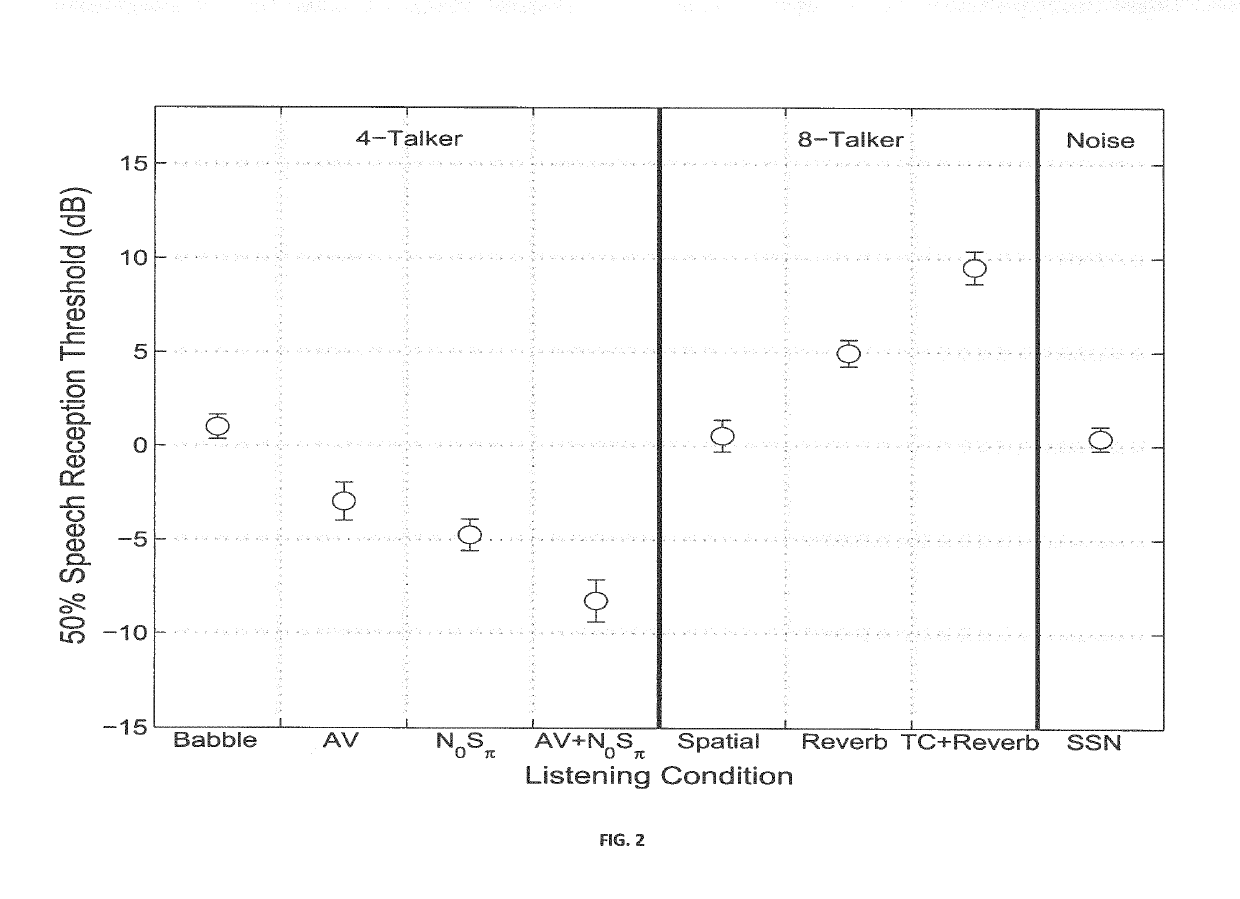System and method for evaluating speech perception in complex listening environments
a speech perception and listening environment technology, applied in the field of speech perception evaluation in complex listening environments, can solve the problems of lack of signal distortion, hearing loss, and degrading auditory skills with increasing hearing loss, and achieve the effects of enhancing different cues in speech perception, enhancing “place and manner” cues, and improving performance benefits
- Summary
- Abstract
- Description
- Claims
- Application Information
AI Technical Summary
Benefits of technology
Problems solved by technology
Method used
Image
Examples
example 1
nt of the Prototype Stimuli Using QuickSIN Sound Track
[0080]All of test stimuli conditions (i.e. simulation environment) used in Examples 1 and 2 were constructed by modifying the stimuli that were developed from the original QuickSIN test. The QuickSIN is a clinical speech-in-noise test designed to rapidly determine the minimum signal to noise ratio (SNR) a listener requires to correctly identify 50% of the keywords in a low-context sentence in the presence of a four-talker babble noise. The minimum SNR required for 50% correct keyword identification performance is referred to as the “speech reception threshold” or the SRT50. The QuickSIN estimates the SRT50 value of a listener by presenting a series of six sentences from the IEEE corpus at SNR values ranging from 25 to 0 dB. The target talker is always presented at a fixed level, usually at 70 dB hearing level (HL), and the SNR value is varied by adjusting the masker level relative to the target to present the first sentence at 25...
example 2
Speech Perception in Normal Hearing Participants in Complex Listening Environment
1. Methods
[0086]A. Participants
[0087]A total of 49 volunteer listeners (28 male, 21 female) with normal hearing participated in the study. All were recruited from the local community of employees, military members, and military dependents at the Walter Reed National Military Medical Center in Bethesda, Md. Their ages ranged from 20 to 45 yr (mean: 28.3 yr, r¼ 6.5 yr). All were given a full audiometric evaluation as part of their participation in the study, and all had hearing thresholds less than or equal to 20 dB in both ears at 250, 500, 1000, 2000, 3000, 6000, and 8000 Hz.
[0088]B. Equipment
[0089]The experiment was conducted with the listeners in quiet sound-treated listening booths while wearing Sennheiser HDA200 audiometric headphones connected to a GSI-61 audiometer (Grason-Stadler). The stimuli were generated with a control PC running MATLAB® with a soundcard (RME Hammerfall) connected to the auxi...
example 3
g Speech Perception Normal and Hearing Impaired Participants in Complex Listening Environment
I. Methods
A. Participants
[0129]Participants between 19 to 57 years of age, who were either civilian staff members or were eligible for health care, were recruited for this study at Walter Reed Army Medical Center (Washington D.C.) or at Walter Reed National Military Medical Center (Bethesda, Md.). Audiometric thresholds were either taken from the listener's health records, if measured within six months of the start of testing, or were measured clinically as part of the study. Listeners were divided in three groups, H1 (normal to near-normal), H2 (mild), and H3 (moderate to severe), according to the hearing profiles described in the US Army standard for medical fitness [AR40-501] (U.S. Department of Army, 1960). Those in the H1 group were subdivided into two groups: normal-hearing (H1NH), having thresholds ≤20 dBHL between 250 to 8000 Hz, and mild hearing loss (H1HL). FIG. 8 shows the mean an...
PUM
 Login to View More
Login to View More Abstract
Description
Claims
Application Information
 Login to View More
Login to View More - R&D
- Intellectual Property
- Life Sciences
- Materials
- Tech Scout
- Unparalleled Data Quality
- Higher Quality Content
- 60% Fewer Hallucinations
Browse by: Latest US Patents, China's latest patents, Technical Efficacy Thesaurus, Application Domain, Technology Topic, Popular Technical Reports.
© 2025 PatSnap. All rights reserved.Legal|Privacy policy|Modern Slavery Act Transparency Statement|Sitemap|About US| Contact US: help@patsnap.com



